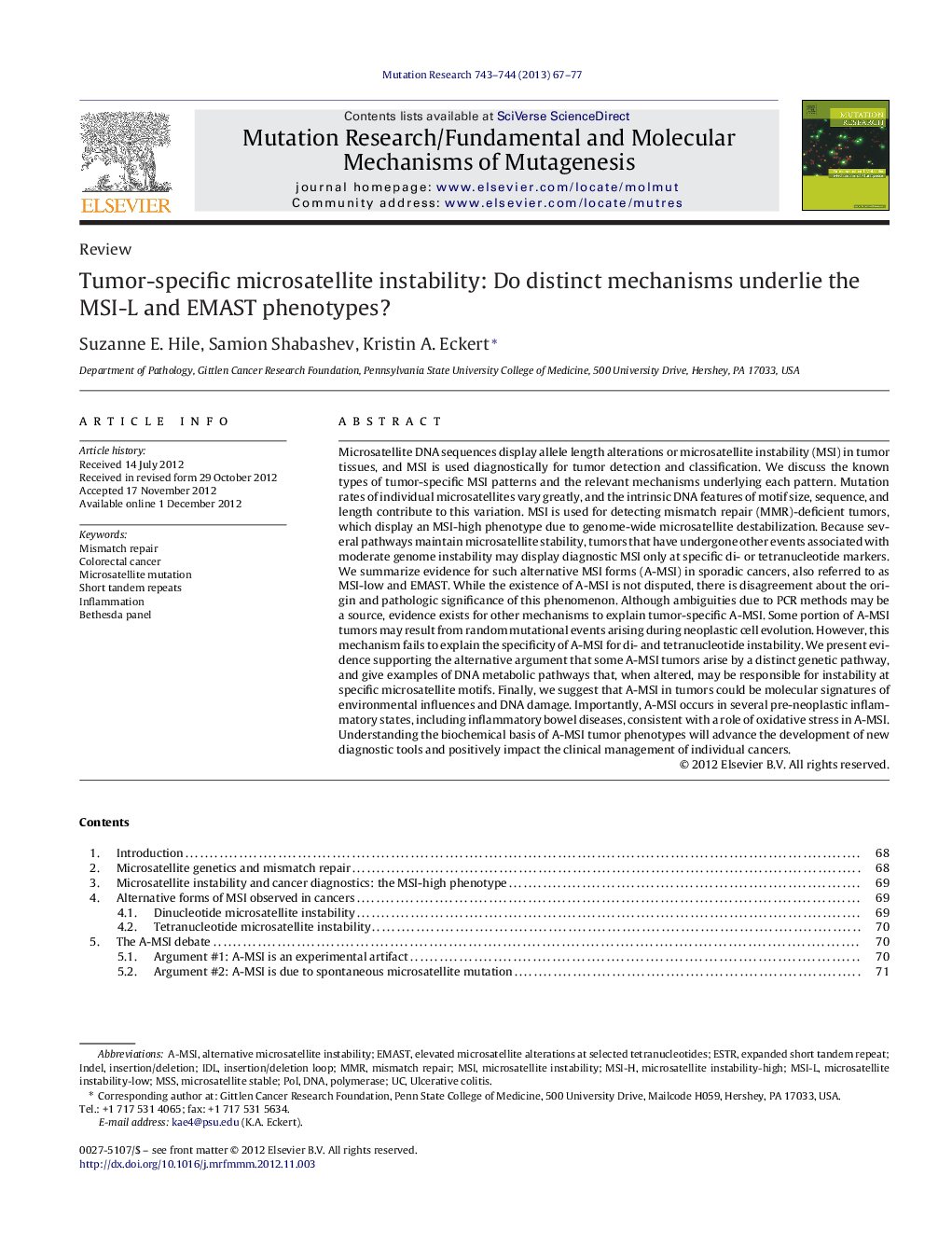| کد مقاله | کد نشریه | سال انتشار | مقاله انگلیسی | نسخه تمام متن |
|---|---|---|---|---|
| 2146430 | 1548344 | 2013 | 11 صفحه PDF | دانلود رایگان |

Microsatellite DNA sequences display allele length alterations or microsatellite instability (MSI) in tumor tissues, and MSI is used diagnostically for tumor detection and classification. We discuss the known types of tumor-specific MSI patterns and the relevant mechanisms underlying each pattern. Mutation rates of individual microsatellites vary greatly, and the intrinsic DNA features of motif size, sequence, and length contribute to this variation. MSI is used for detecting mismatch repair (MMR)-deficient tumors, which display an MSI-high phenotype due to genome-wide microsatellite destabilization. Because several pathways maintain microsatellite stability, tumors that have undergone other events associated with moderate genome instability may display diagnostic MSI only at specific di- or tetranucleotide markers. We summarize evidence for such alternative MSI forms (A-MSI) in sporadic cancers, also referred to as MSI-low and EMAST. While the existence of A-MSI is not disputed, there is disagreement about the origin and pathologic significance of this phenomenon. Although ambiguities due to PCR methods may be a source, evidence exists for other mechanisms to explain tumor-specific A-MSI. Some portion of A-MSI tumors may result from random mutational events arising during neoplastic cell evolution. However, this mechanism fails to explain the specificity of A-MSI for di- and tetranucleotide instability. We present evidence supporting the alternative argument that some A-MSI tumors arise by a distinct genetic pathway, and give examples of DNA metabolic pathways that, when altered, may be responsible for instability at specific microsatellite motifs. Finally, we suggest that A-MSI in tumors could be molecular signatures of environmental influences and DNA damage. Importantly, A-MSI occurs in several pre-neoplastic inflammatory states, including inflammatory bowel diseases, consistent with a role of oxidative stress in A-MSI. Understanding the biochemical basis of A-MSI tumor phenotypes will advance the development of new diagnostic tools and positively impact the clinical management of individual cancers.
► Alternative forms of microsatellite instability at di- and tetranucleotide markers (A-MSI) are observed in tumors.
► Some A-MSI may be due to a higher spontaneous mutation rate within a subset of microsatellite markers.
► A-MSI can result from defects in, or aberrant expression of, specific DNA repair proteins.
► DNA damage, in particular oxidative stress, may contribute to A-MSI in tumors.
► Understanding the biochemical basis of A-MSI will positively impact the clinical management of individual cancers.
Journal: Mutation Research/Fundamental and Molecular Mechanisms of Mutagenesis - Volumes 743–744, March–April 2013, Pages 67–77